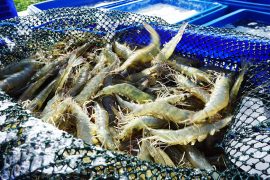
Study reveals that birds hunt for truffles
Truffles are normally thought of as a rare and expensive delicacy for humans, while also providing part of the diet of some mammals. New research from the University of Florida has revealed the some birds are also partial to seeking out and dispersing these forms of fungi.
“Previously, it was assumed that only mammals consumed and dispersed truffle spores, so our study is the first to document birds doing this as well,” said study first author Marcos Caiafa.
The researchers have discovered that two ground-dwelling bird species found in Patagonia, chucao tapaculos and black-throated huet-huets, seek out and regularly consume truffles, spreading the spores through their feces. It was previously assumed that the birds exclusively fed on invertebrates, seeds and fruit.
“Truffles are essentially mushrooms that grow underground. Unlike aboveground mushrooms, which release their spores into the air, truffles depend on animals consuming them to spread their spores,” explained study senior author Matthew E. Smith.
Contrary to the belief that all truffles are desirable for high-end cuisine, only a few of the hundreds of species of underground fungi appeal to humans, with the majority evolving to attract different types of animals to promote dispersal. The spread of the fungi encourages a healthy forest ecosystem, helping to colonize the roots of trees and contribute to a symbiotic relationship.
“These fungi form mycorrhizas, a relationship whereby the fungus helps the plant take up nutrients in exchange for sugars from the plant,” explained Caiafa.
To confirm the researchers’ hypothesis that the birds actively seek out truffles, the team collected the bird droppings to analyze them for truffle DNA. The results showed truffle DNA in 42 percent of chucao tupaculo and 38 percent of huet-huet feces. By using a microscopic analysis technique called fluorescent microscopy, the team was also able to confirm that the spores were viable, suggesting that the truffles were not only being eaten but also spread.
“DNA-based diet analysis is exciting because it provides new insights into interactions between organisms that would otherwise be difficult to directly observe,” said study co-author Michelle Jusino. “And, because sampling feces does not negatively impact the target species, I think these methods are invaluable for studying and protecting both common and rare species in the future.”
The study authors believe that some of the Patagonian truffles may have evolved specifically to attract birds. “Some of truffles that the birds eat are brightly colored and resemble local berries. Our future research may look to see if there is an evolutionary adaptation there – that the truffles have evolved to look more like the berries that the birds also eat,” explained Smith.
The study is published in the journal Current Biology.
—
By Calum Vaughan, Earth.com Staff Writer













